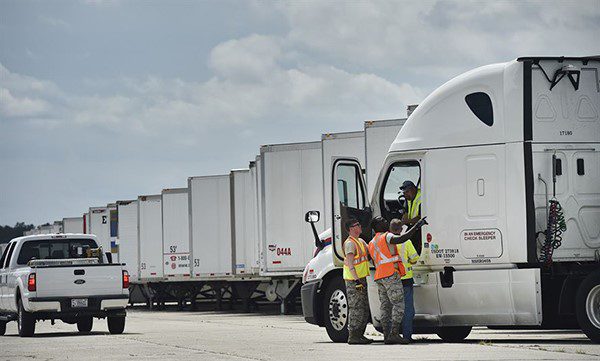When it comes to the truck driver shortage, The Struggle is Real
When it comes to the state of the truck driver shortage, one thing clearly remains certain: not much has changed in terms of truly lowering the average turnover rate.
Yes, carriers are aggressively, raising driver sign-on bonuses, increasing pay, and providing financial aid options for potential drivers to attend driver training schools to get them their CDL licenses, among other things. as millennial’s say, “the struggle is real,” and there is no real sign of it abating.
Data points from the American Trucking Associations (ATA) support that struggle thesis, too.
The ATA reported this week in its quarterly Trucking Activity Report that the annualized turnover rate for large truckload carriers or fleets with more than $30 million in annual revenue, increased 6% to 94% in the first quarter of 2018. This marks a 20% annual increase.
The latter data point is pretty telling, especially when factoring in that unemployment is below 4% and many potential truck drive candidates prefer other options like construction, for example, which tends to pay better than driver jobs and comes with the benefit of being home every day after work, something which is not a given behind the wheel.
ATA added that the first quarter turnover rate for LTL carriers, which is not nearly as high as it is for truckload carriers, was up 2% to 10%. It also noted that the turnover rate for smaller truckload carriers dropped 7% compared to the first quarter at 73%, and was up 7% annually.
As always, ATA Chief Economist Bob Costello clearly presented the situation, in terms of the challenges it creates and what it could mean for freight transportation and logistics.
Carriers continue to struggle both recruiting and retaining quality drivers – leading to increasing wages. The tight driver market will continue to be a source of concern for carriers in the months ahead. Turnover is not a measure of the driver shortage, but rather of demand for drivers. We know that as freight demand continues to rise, demand for drivers to move those goods will also rise, which often results in more driver turnover. Finding enough qualified drivers remains a tremendous challenge for the trucking industry and one that if not solved will threaten the entire supply chain.
It is far from a new issue and has been concerning for a long time. Just look back to the landmark October 2017 ATA Driver Shortage Report, which took a deep dive into the current driver shortage situation, with analysis on where things may be headed and what needs to happen to prevent a bad situation from becoming even worse down the road.
It noted that from 2015 to 2016 the driver shortage actually declined from 45,000 to 36,500. While that is encouraging, future numbers may not be as much, though, due to multiple factors that were outlined in-depth in the report, including: an aging driver workforce; lifestyle issues; and regulatory challenges, among others.
It went on to note that the driver shortage was projected to hit 50,000 by the end of 2017, with the possibility, if things remain the same, that the number could exceed 174,000 by 2026.
Costello also correctly pointed out that in addition to the sheer lack of drivers, fleets are also suffering from a lack of qualified drivers, which amplifies the effects of the shortage on carriers
“This means that even as the shortage numbers fluctuate, it remains a serious concern for our industry, for the supply chain and for the economy at large,” he wrote. “We experienced a ‘freight recession,’ last year [in 2016], which eased the pressure on the driver market. Now that freight volumes accelerating again, we should expect to see a significant tightening of the driver market.”
And fast forwarding to today it is clear that there has been tightening and then some, given the current state of the freight market, which more than a few industry stakeholders have called “the best ever.”
For certain, carriers are definitely loving the current market. Shippers? Not so much. What happens from here is not really clear, but we should not really expect to see any material changes anytime. Soon. Carriers will continue to enjoy the ride featuring tight capacity and increasing rates, although they are doing what they can to add drivers, and shippers continue to navigate the storm and do their best to stay the course.
See Full Article @logisticsmgmt.com
